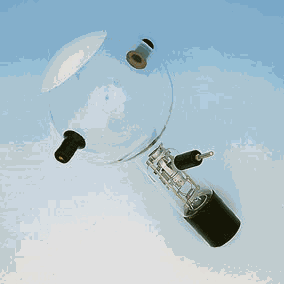 |
High School
Teachers at CERN |
 |
|
| WWW.CERN.CH |  |
||
 |
High School
Teachers at CERN |
 |
|
| WWW.CERN.CH |  |
||
Teaching Particle physics' main problem is not to be able doing lots of experiments, especially hands-on experiments, so we were glad when Sascha Schmeling offered an introduction to and work with Particle Physics experiments for Schools. He presented two kinds of experiments; standard experiments with standard equipment used at school normally, and some self-made that use available or cheap material.
This course developed by Sascha had been running in Rheinland-Pfalz (Germany), and it took 5 double lessons of 90 minutes.
Classic School experiments
Electron Beam Diffraction Tube

Millikan Experiment (not available for us)
In contrast to these expensive standard experiments, the self-made experiments can be set up with available or inexpensive materials, such as
- Coffee pots (KamioCan)
- Neon Tubes (Muon detection)
We did the experiments by ourselves in small groups. It was amazing to watch the teachers (sometimes) behave like students during the work.
The Experiments:
For each of the classic experiments we got a worksheet with theoretical background information, tables for measurement, and questions. They were easy to use, helpful, and led us to quite good results.

Electron Beam Diffraction Tube:

We had to measure the radius of the inner two circles, and to calculate the de Broglie wavelength of the electron. Comparedwith the theory, we were not so bad, only 25 % too large!
Franck-Hertz Experiment:

We had to increase the accelerating voltage of the electrons and control the current through the tube. We had to find the dips in the plot current versus voltage, and to read out of the plot the voltage difference between them. In this way we got the energy levels.
On the photo above Jules is just trying to plot our measured points.
Finebeam Tube &endash; e/m
For calculating e/m, we had to measure V, B, and r. We had some problems with measuring B, but finally we got good results.
Summary: The experiments, if prepared carefully, can be handled by students aged 16 to 18 working together in small groups. The results can be taken for a discussion about exactness of measurements, and they are good enough to get an idea of the physics behind the experiments, with some theoretical knowledge to calculate and to interpret them.
The home-made Experiments
KamioCan

It's a small experiment to detect muons. You need a power supply, an oscilloscope, a photomultiplier, and a water-filled vacuum flask (Thermos or Dewar). With a larger pot, a PC, and electronics it is possible to measure the muon lifetime. See the links below for details/
Neon Tubes


For this experiment you need neon tubes (even faulty ones) and a high voltage power supply. It works like a spark chamber. The problem for students doing this experiment is that they have to work with high voltage and wires without isolating material around them, and it is not allowed (too dangerous) but it would make an excellent demonstration providing the apparatus is (for example) used within a fume cupboard.
It was nice to see the experiments and to work with them. We had an interesting day in Bld. 156.
For more information on these experiments and other physics education related subject, take a look at Sascha's webpages (partly in German):
http://134.93.128.218
http://134.93.128.218/hepteach
http://134.93.128.218/hepteach/workshop .
| © CERN and High School Teachers Programme at CERN | Last modified: 28 June 2002 |